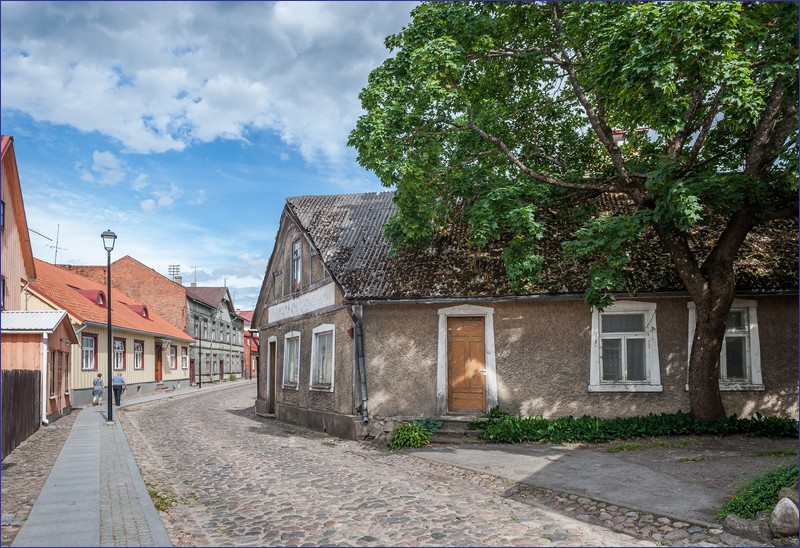Estonia is a beautiful country with thick forests, picturesque coastline and charming towns. Traveling by train in Estonia is a good choice if you want to get from Tallinn to Tartu or Narva and Viljandi. Railway don’t reach many interesting places, and on other routes buses are a much better option.
Last updated: 16.04.2025
The rail transport system in Estonia consists of about 1,200 kilometres of railway lines, of which 900 kilometres are currently in public use. Public railways in Estonia are 1,520 mm. (broad gauge).
The first railway in present day Estonia from Paldiski to Narva was finished in 1870.
In 1877 railway line from Tapa to Tartu was inaugurated. Ten years later it was extended to Valga.
Train travel in Estonia – domestic trains
Domestic passenger trains are operated by Elron. Tickets, in my opinion, are quite expensive. Modern Elron’s trains are air-conditioned, monitored, and passengers can use free Wi-Fi and electrical sockets. All vehicles have a separate space for bicycles (up to 10 bikes) and wheelchairs. There are two classes on Elron trains. It is possible to reserve a seat in first class when purchasing a ticket online. First class differs from second class with more comfortable seats and sockets at each seat.
Timetable:
elron.ee – journey planner, timetable, prices, e-shop
peatus.ee – bus and train connections (journey planner)
Don’t forget validate your ticket in the ticket machine on the train as immediately as you board. There are often replacement buses instead of the train during engineering works.
Domestic passenger trains run on the following routes:
Tallinn – Tartu (-Valga)
Tallinn – Narva
Tallinn – Viljandi
Tallinn – Paldiski
Tartu – Koidula
On routes from Tallinn to Tartu, Narva and Viljadi there are ordinary trains and express trains. Ordinary trains are slower, but tickets are cheaper.
Important notes:
– in 2018 trains to Parnu were ceased due to Rail Baltica project.
– there are no passenger trains to Voru.
– trains in Tallinn and outskirts of the capital are often overcrowded.
– there are no overnight trains.
– the train station in Viljandi is 1,6 southwest of the city centre.
Travelling by train in Estonia with Interrail ticket is complicated if you have an Interrail for 1st class. Reservation is compulsory and you must send an e-mail to Elron in one-week advance with scan of your Interrail ticket, and then Elron will send you reservation for your journey.
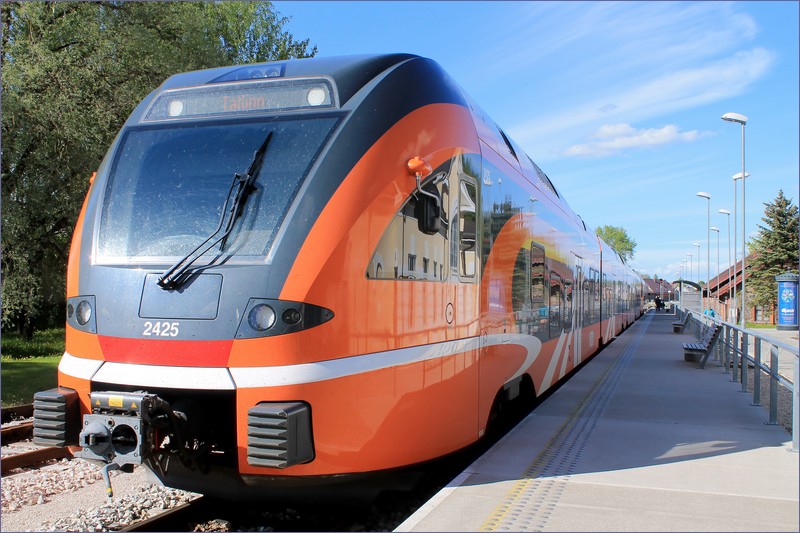
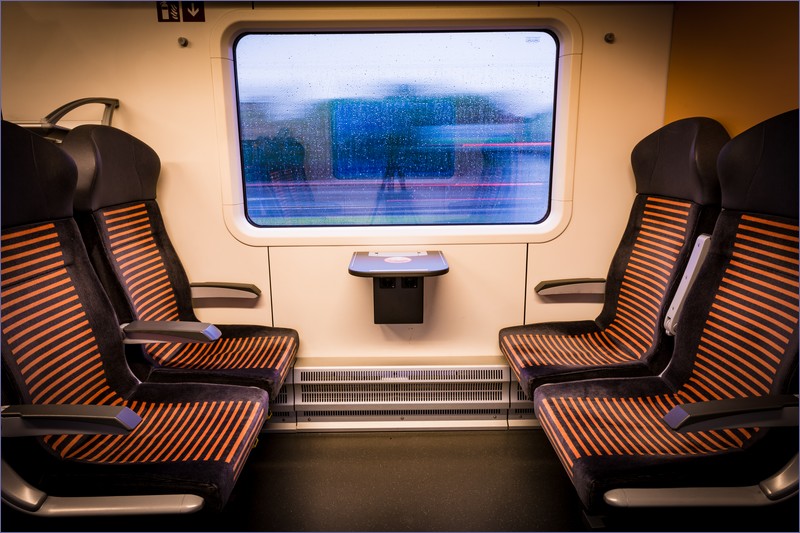
Train travel in Estonia – international trains
Estonia has a railway connection with adjacent countries but there are only a few trains to Latvia.
Russia
All trains to Russia were suspended after Russian invasion on Ukraine. Before the Russian aggression, there were trains from Tallinn to Moscow and Sankt Petersburg, operated by GoRail.
Latvia, Lithuania
Two trains daily in each direction run from Riga to divided city of Valga/Valga. Railway station is on Estonian side. Usually one of this trains is connected with Estonian train from Valga to Tallin through Tartu. You need to buy two separate tickets for route Riga – Valga and Valga – Tallin.
There is a direct train from Vilnius to Valga where you can change train and continue your journey to Tartu and Tallinn. Estonian train from Valga to Tallinn will be wait on the same platform. There is no need to change trains in Riga. Train runs daily. Ticket for the whole journey from Vilnius to Tallinn costs 39 eur.
Check the timetable before your journey:
bilietas.ltglink.lt – Vilnius – Tallin tickets
vivi.lv – Latvian timetable
elron.ee – Estonian timetable.
There are plans to launch a new train between Riga and Tartu in 2025.
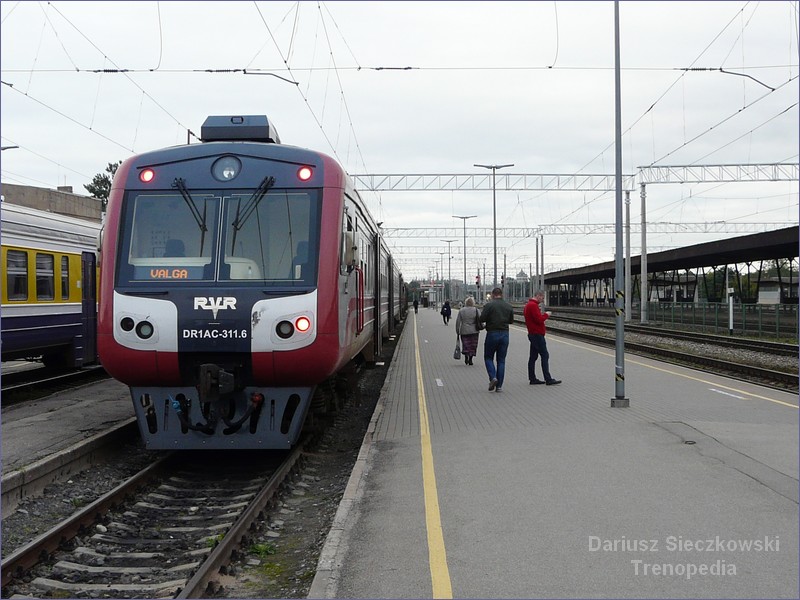
Estonian Railway Museum in Haapsalu
Haapsalu is a small Estonian Town once-known as a seaside resort for an aristocracy. Main city’s tourist attraction, especially for railway enthusiast, is Estonian Railway Museum situated around former railway station famous for grand colonade and once largest covered platform in the Russian Empire. There are locomotives, multiple units and passenger cars.
In Haapsalu you can also see charming little museum with displays on the history of the resort town, St. Nicholas Cathedral and Haapsalu Episcopal Castle.
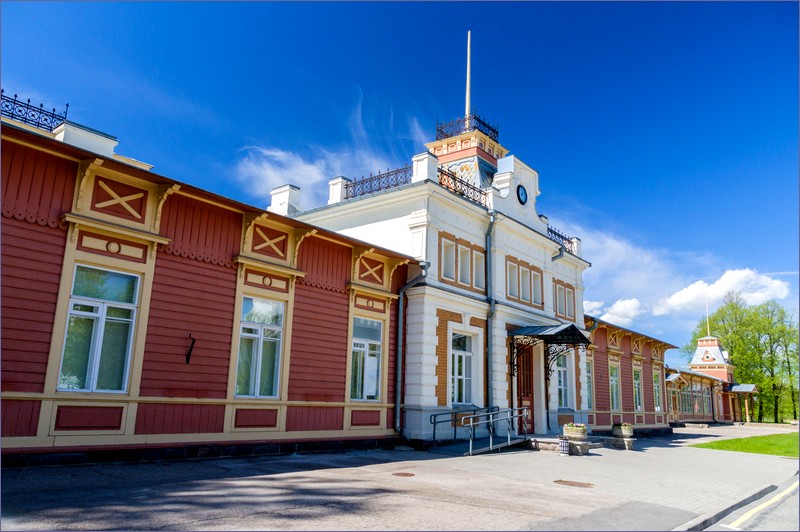
Narrow-gauge railways in Estonia
There are three operational narrow-gauge railways in Estonia but these railways operate very rarely.
Naissaar Island Railway – a network of former 600 mm military railway. Trains run on demand of travel agencies.
Railway Museum in Lavassaare – a 2km long line close to the Parnu. Usually it operates during summer on weekends.
Sonda-Mustvee railway in Avinurme – 178 meters long railway line – remnants of the 63 km line from Sonda to Mustvee.
Narrow-gauge railways in Estonia – additional information
Railways on Saaremaa Island
Saaremaa is the largest and most populous island in Estonia. Currently, there are no railways on Saaremma.
In the past, the military railway connected port of Romessare with the center of Kuressare. The line was built by the Russian in 1917 with 750 mm gauge. The same year Germans regauged the line to 600 mm. The railway started from the port of Romessaare and went to the center of Kuressaare, the total length of the line including branch lines was 8 km. In 1918 German occupation forces left the island and railways were handed to Kuressare. Later, passenger trains also run on the route. The entire line was closed in October 1940 as unnecessary.
On 15 June 1921 Estonian Parliament adopted a “Construction of the Railway of Saaremaa Act but it was never implemented”
In 1950s there was a plan to build a network of broad-gauge railways around Saaremaa with a total length of more than 200 km. The railway was intended to transport heavy artillery. The first sections were opened in summer 1952, the network was completed in 1956 (189,8 km). Main railway station with depot, workshop, power plant and water supply system was built in Kuressaare railway station by Kalevi street. The village of Viki was the main railway junction. In 1956 the railway network was handed to Estonian but for econonomic reasons the entire network was abandoned and in 1960s roads were built on embankments.
Main railway stations in Estonia
There are four main railway stations in Estonia – Tallinn Balti Jaam, Narva, Tartu and Valga. Train station in Viljandi is small and located far from the city centre. Train stop in Pärnu was closed in 2018 and train station in Võru is abandoned.
Balti Jaam – the main railway station in Tallinn, Estonia, and the largest railway station in Estonia. Currently, almost all domestic commuter, regional and long-distance and international depart from the station (the only exception is train from Tartu to Koidula). The station is located within walking distance from the Old Town.
Balti Jaam train station – additional information
Tartu – most beautiful train station in Estonia. Located 1,5 km from the city center, has carefully renovated interiors.
Tartu train station – additional information
Narva – the easternmost railway station in Estonia. It is located in the city of Narva, very close to the border with Russia. Currently, the station serves trains to Tallinn.
Narva train station – additional information
Valga – a railway station which serves the divided city of Valga/Valka. The station is located on Estonian side of the city but Latvian trains also terminate here. It is a nice station with only basic facilites. It serves passenger trains from Valga to Tartu and Tallinn and to Riga.
Valga train station – additional information
Very nice is a train station in Elva on the Tartu – Valga route.
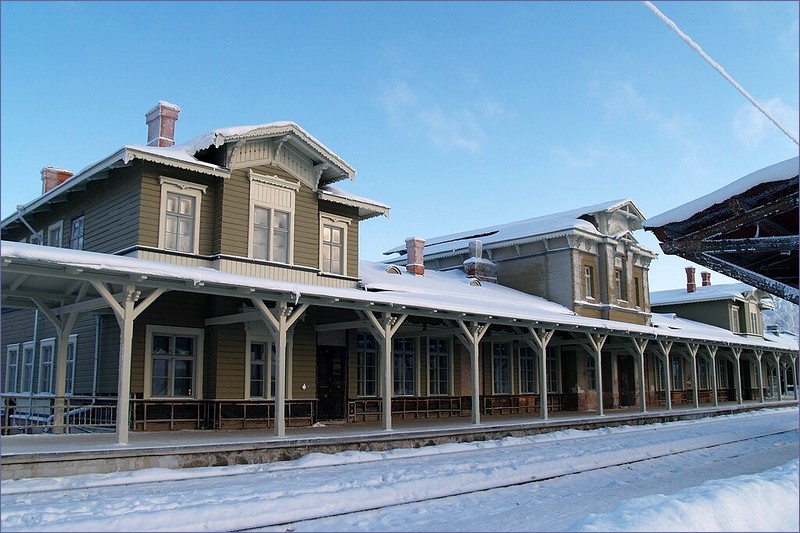
Tallinn
Tallinn is the capital of Estonia and a must-visit destination for anyone traveling to the country. The city is charming but expensive and is becoming increasingly popular among partygoers looking for a drinking getaway.
Tallinn is famous for its beautiful Old Town, which boasts numerous well-preserved historical landmarks. Visitors can find many Protestant churches and Orthodox cathedrals. A stroll through the Old Town offers the chance to admire a variety of architectural gems, from churches and medieval houses to towers and parks.
One of the most picturesque spots is Raekoja plats, the Town Hall Square, surrounded by historic buildings. Exploring the surrounding streets allows visitors to soak in the unique atmosphere of the city. The city gates, defensive walls, and accessible towers are among Tallinn’s many attractions. The best way to experience the city is simply to visit and see it all in person.
Tallinn has a wide selection of museums, most interesting is the Estonian Open Air Museum located on the outskirts of Tallinn in Rocca al Mare. Visitors can step back in time, walking among traditional Estonian houses and windmills. It offers a chance to taste traditional Estonian food. Set in a quiet, peaceful area (Vabaõhumuuseumi tee 12), perfect for escaping the city’s hustle and enjoying a nostalgic atmosphere. Open year-round.
Very populars is also KGB Museum situated in the Viru Hotel. Features exhibits about Soviet-era surveillance operations and KGB espionage techniques. Advance booking is recommended due to high visitor demand.
Tallinn City Museum situated in a historic building in the city center (Vene 17) displays historical and ethnographic collections covering the city’s history from its founding to Estonia’s independence in 1991. The museum was nominated for the European Museum of the Year Award in 2003.
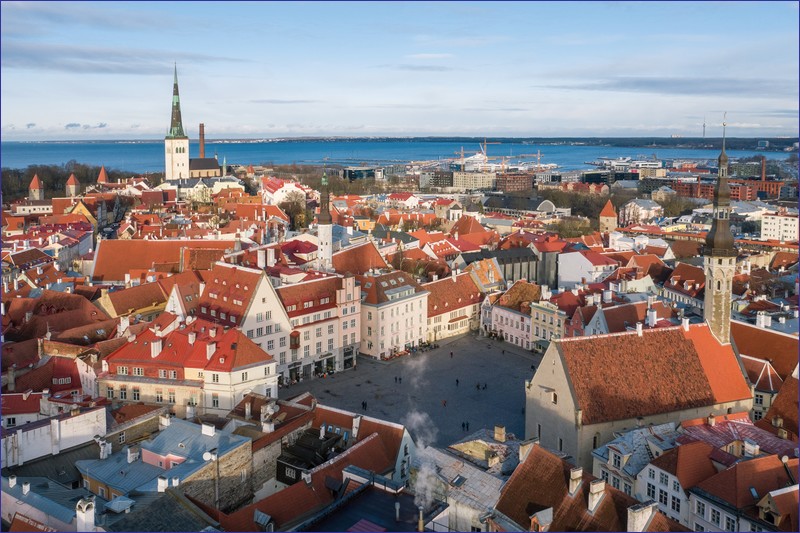
Day trips by train from Tallinn
Direction: Tartu
Tartu – the second-largest city in Estonia is mainly associated with the university founded in 1623 by the Swedish king Gustavus Adolphus II. Tartu is a city with a rich and long history. It was founded by the Estonians as early as the 5th century and is mentioned in chronicles under the name Tarpatu. It is a city with many preserved historical monuments and, at the same time, a city full of young, energetic people studying at the two most important universities in Estonia.
The city center has a compact layout, making it perfect for a peaceful walk with a camera through its cobblestone streets. Many buildings have been renovated in recent years and look beautiful both in person and in photographs. The Emajõgi River flows through the city, and in summer, short tourist cruises are organized on it. The river fits in beautifully with the historic architecture.
Tartu is home to several interesting museums – the Beer Museum, the AHHAA Science Centre with thematic exhibitions on technology and biology, and the Estonian National Museum, which focuses on Estonian traditions and the lives of Estonians through the centuries. Another key museum is the Tartu City Museum, which features two permanent exhibitions: one about the city’s history and related artifacts. Here you’ll find a wide variety of items – from old vessels and coins to archival photographs.
Direction: Narva
Rakvere – small but vibrant town often visited by tourists who want to visit partially restored medieval fortress that dominates the town. Visitors can explore the castle grounds, interact with costumed guides, try archery, or visit the torture chamber and alchemy room. Other tourist attractions include Rakvere Town Citizen’s Museum in beautiful old wooden house and Estonian Police Museum. Rakvere is one of the oldest towns in the country. Railway station is located about 1,5 km from the castle. Various music and food festivals are held in the town throughout the year.
Narva – Soviet-style third-largest city in Estonia. The easternmost city in the country, located right on the border with Russia, separated by the Narva River. Most important landmark is Hermann Castle – well-preserved medieval fortress facing the Russian Ivangorod Fortress across the river. The castle includes a museum and offers panoramic views from the tower. You can visit also Town Hall and small Town Square, in the past riverside promenade was very popular. Railway station is located in the city centre and was recently renovated.
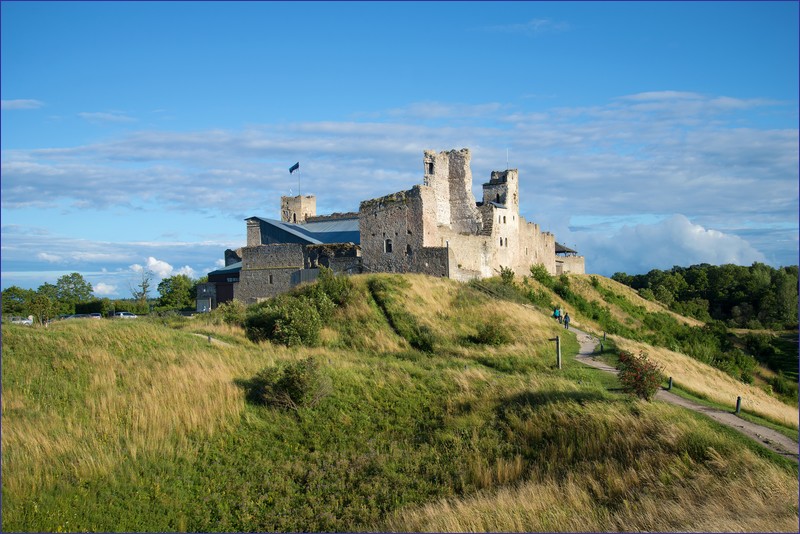
Direction: Viljandi
Viljandi is a charming small town with preserved wooden houses and remains of a 13th-century Livonian Order fortress overlooking Lake Viljandi. The town is surrounded by forests and hills, it is an ideal destination for hiking and relaxation in nature. You can visit also Viljandi Museum, St. John’s Church, and a small suspension bridge.. The most important place is the main square – somewhat neglected, reminiscent of the squares in sleepy towns for example in eastern Poland. On the square stands an old water tower, which has been opened to tourists as a viewing tower, offering excellent views of the city and its surroundings.
The small railway station is located far from the city center, so bus is a better option than train.
